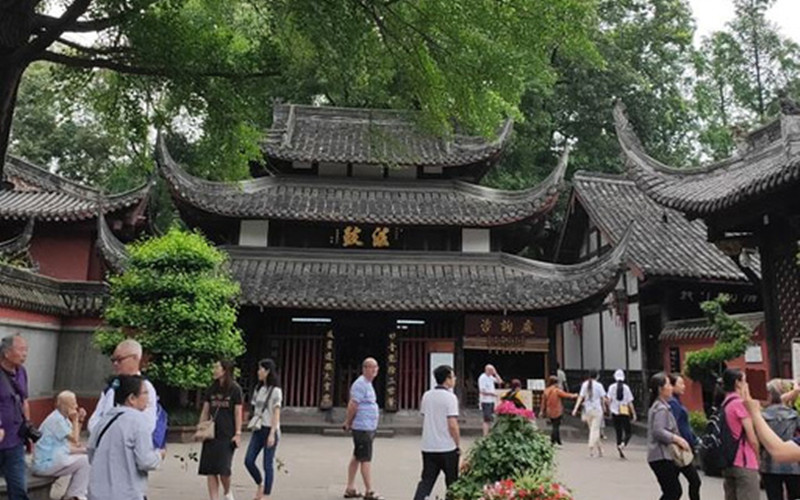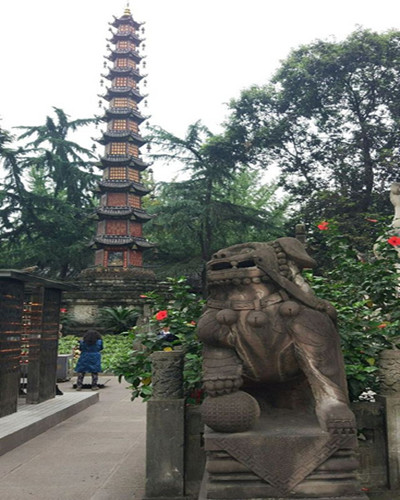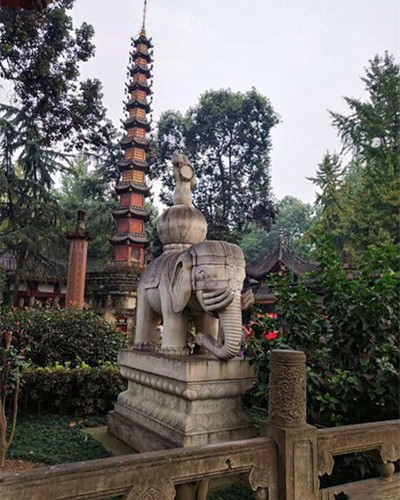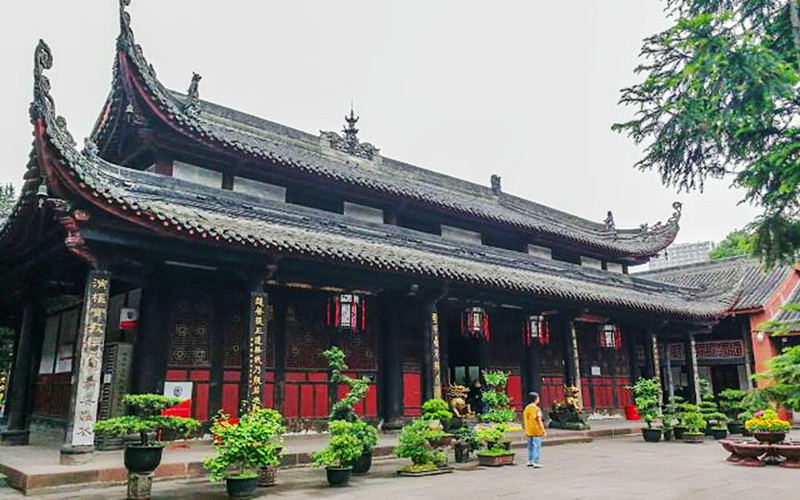Wenshu Monastery, also known as Wenshu Temple, is located in Qingyang District of Chengdu City. It was first built during the Sui Dynasty ( 581-618). After reconstruction during the Kangxi period in the Qing Dynasty(1644-1911), it was renamed Wenshu Monastery.

There are over 300 Buddha statues of various sizes enshrined in the courtyard, made of materials such as steel, gauze, wood carving, stone carving, clay sculpture, etc. One of them is a precious Burmese jade Buddha from Myanmar.


There are five main halls in the temple, such as Three Great Masters Hall, Shakya ManiHall, Lecture Hall, and Sutra Pavilion, which are connected successively. They are also integrated with the bell towers, chambers, and corridors on the east and west sides, together with other buildings, forming a closed quadrangle. There are also tea houses and a unique vegetarian restaurant called "Xiangzhaitang" in the courtyard, making it a popular leisure destination for local residents.

In addition, the temple also houses many precious paintings and calligraphy from the Ming and Qing dynasties. The most famous ones are the "Empty Forest" plaque bestowed by Emperor Kangxi on the Wenshu Temple in 1702, and the "Sea Moon" banner by the Song Dynasty calligrapher Mi Fu. There are also Buddhist relics such as the Tang Dynasty monk Xuanzang's skull, the Indian Beiye Sutra, and the Tang Dynasty Japanese gilded sutra slips. However, as it is a precious cultural relic, it is rare for outsiders to see it.
The Wenshu Temple Street in front of Wenshu Temple has been developed into the Wenshu Square, known as the "Urban Zen Forest", with all its antique buildings and many snacks still in operation.
Travel Tips
Address: No. 66 Wenshuyuan Street, Qingyang District, Chengdu City, Sichuan Province
Telephone: 028-86930623,028-86662375
Opening Hours: From 08:00 to 17:00 throughout the year
Entrance Fee: CNY10
